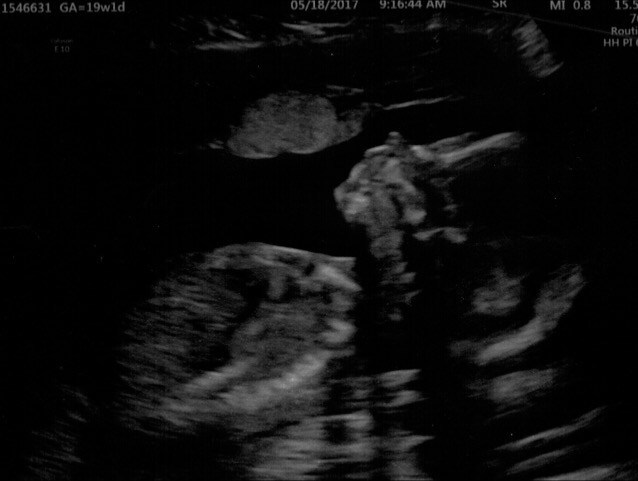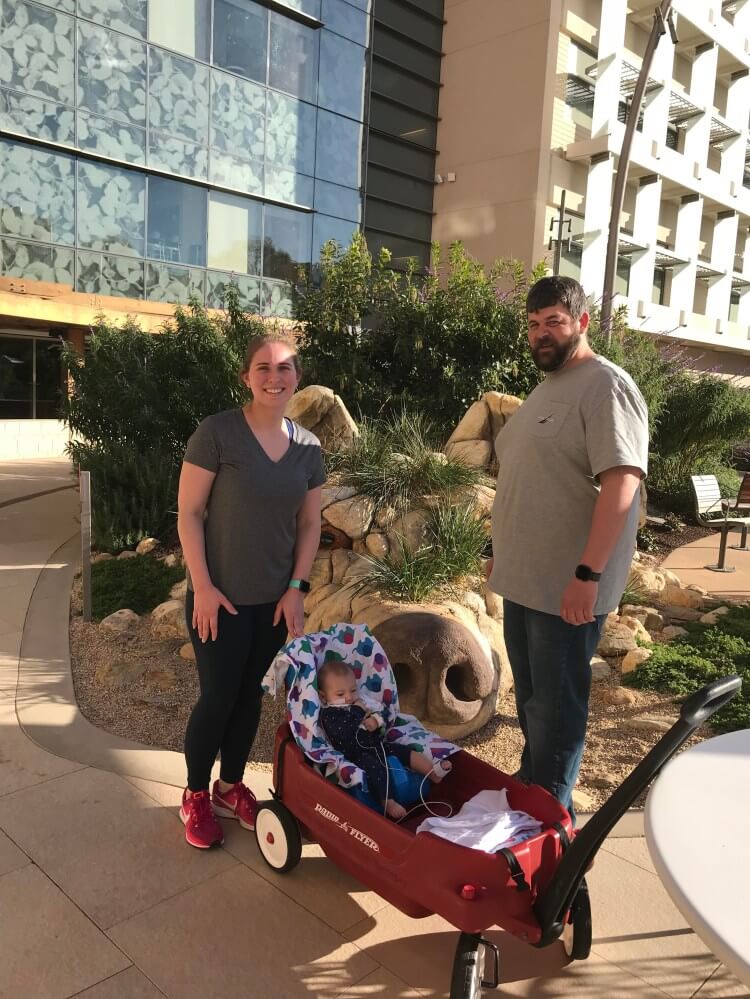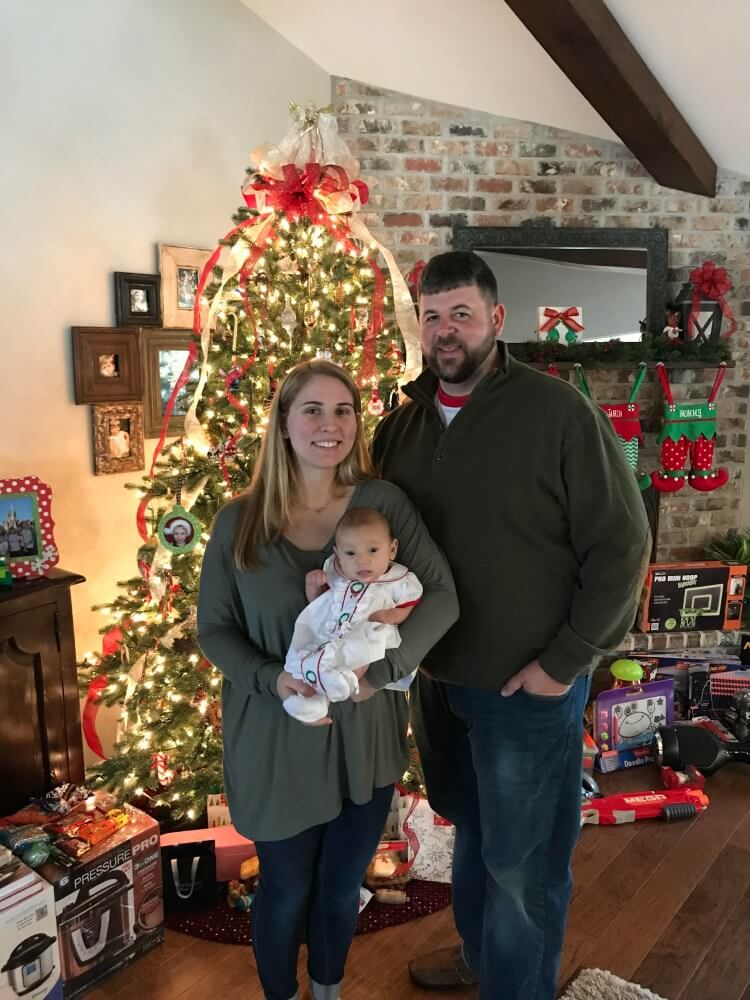This is the rarest and most complex form of TOF.
- Author: Brittany P.
- Category: Family Birthing Center


“ After a 10-day stay in the NICU, we were able to bring our baby home.”
My husband and I decided to wait to start a family.
I had just started my last semester of Nurse Practitioner School in January 2017 when we found out I was pregnant. We were beyond excited.
Everything was off to a great start. There were no complications early on, and my OB/GYN, Dr. Rebecca Perret, did not identify any health concerns for my baby or myself.
Five days after graduation, my husband Jeremy and I went in for the baby’s routine 18-week anatomy scan. Even with years of nursing school and professional medical training, I was in no way prepared for what I learned that day.

At first, we were amazed. During the ultrasound, Jeremy and I were able to see our baby’s profile, fingers, toes, and the flicker of the heartbeat.
But I noticed the tech kept going back to the baby’s heart. As a nurse, I was able to identify the four, well-developed ventricles of the baby’s heart, and I could also see the heart valves working. The ultrasound tech finished up and said she was going to ask the doctor to look at the images. She said it was routine for the doctor to take a second look. I didn’t think anything of it. The maternal-fetal medicine doctor came in, introduced himself, and quickly started doing the ultrasound.
There was a long silence until he finally sighed and said, “I cannot find the baby’s pulmonary artery.”
I was in total shock. As a nurse, I understood the pulmonary artery is a necessary part of the heart, which is needed for a person to be able to live.
The next day we met with a Pediatric Cardiologist who performed a fetal echocardiogram. Our baby was then diagnosed with Tetralogy of Fallot (TOF) with Pulmonary Atresia and MAPCAS. This is the rarest and most complex form of TOF.
I felt heartbroken.
And I felt completely blindsided because I had no idea the 18-week ultrasound also screened for Congenital Heart Defects (CHD).
On September 29, 2017, my husband and I welcomed our baby GIRL, Theresa Catherine “Tessa”, into the world. She was absolutely beautiful! After a 10-day stay in the NICU, we were able to bring our baby home.
As much as I adored her, I still feared the obstacles she would face in the future, and the battle she will fight for the rest of her life.
On January 19, she had a complete repair of her heart, and after three weeks in the hospital, we returned home with our baby on Mardi Gras Day!Tessa will continue to need regular echocardiograms, yearly cardiac catheterization procedures, and more open-heart surgeries as she grows. The normal parenting routine of feedings and diaper changes now also include echocardiograms, cardiac catheterizations, and open-heart surgeries.

Brittany, Jeremy, and Tessa outside Lucile Packard Children’s Hospital Stanford in Palo Alto, California following Tessa’s open heart surgery.
I was talking to my grandfather after Tessa’s surgery, and I expressed to him how upset I was that she will need more open heart surgeries. My grandfather, a former high school physical education teacher and football coach, had a quick response.
He said, “Brittany! If I was picking football players for my junior varsity and varsity teams, I don’t want Tessa on my Junior Varsity team. I want her on my Varsity team because she is tough!” And that she is!

CHDs are the number 1 birth defect in the US and affect nearly 40,000 babies each year.
For all pregnant women out there, and to those hoping to become pregnant, know that there is an army of “Heart Mamas” determined to bring awareness to this field and to advance the research, care, and prevention of Congenital Heart Defects.
The Louisiana Pediatric Cardiology Foundation has been a huge help to me and my family throughout this process. The American Heart Association, Pediatric Congenital Heart Association are great resources, too.
Even after all Tessa has been through in her first five months on Earth, she continues to smile, and that gives my heart hope.


